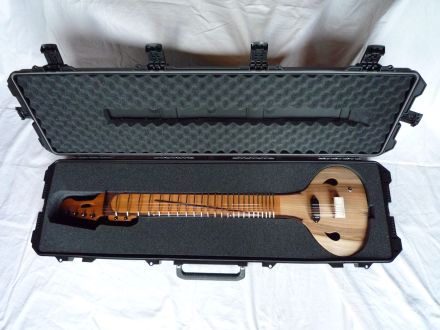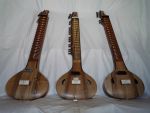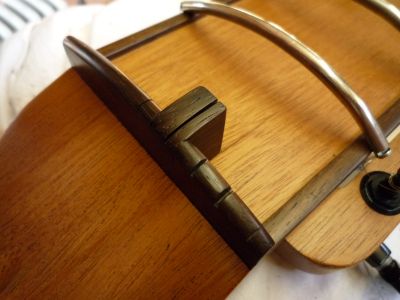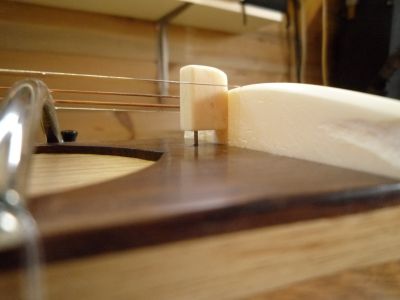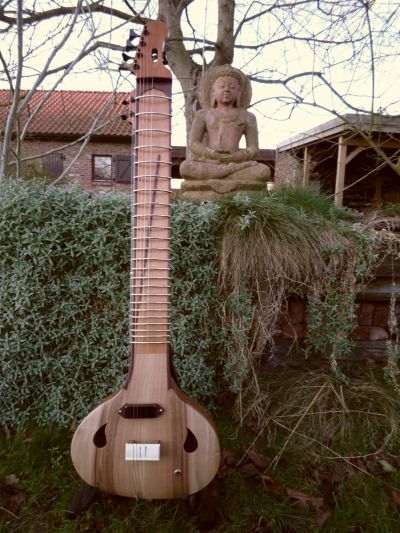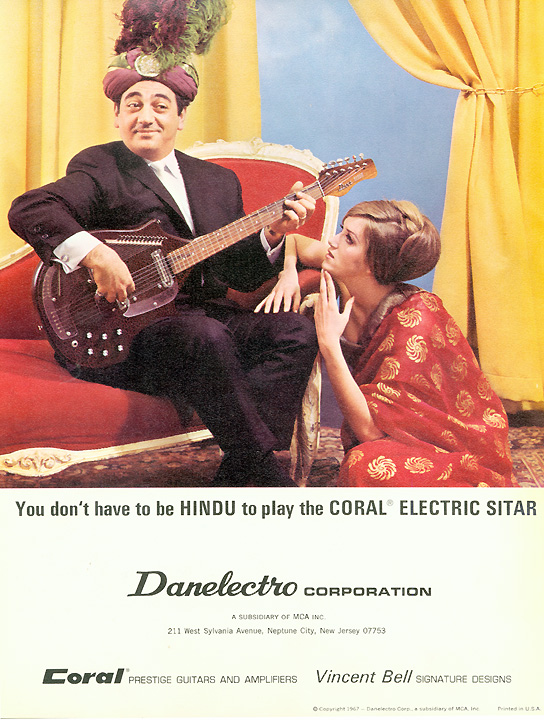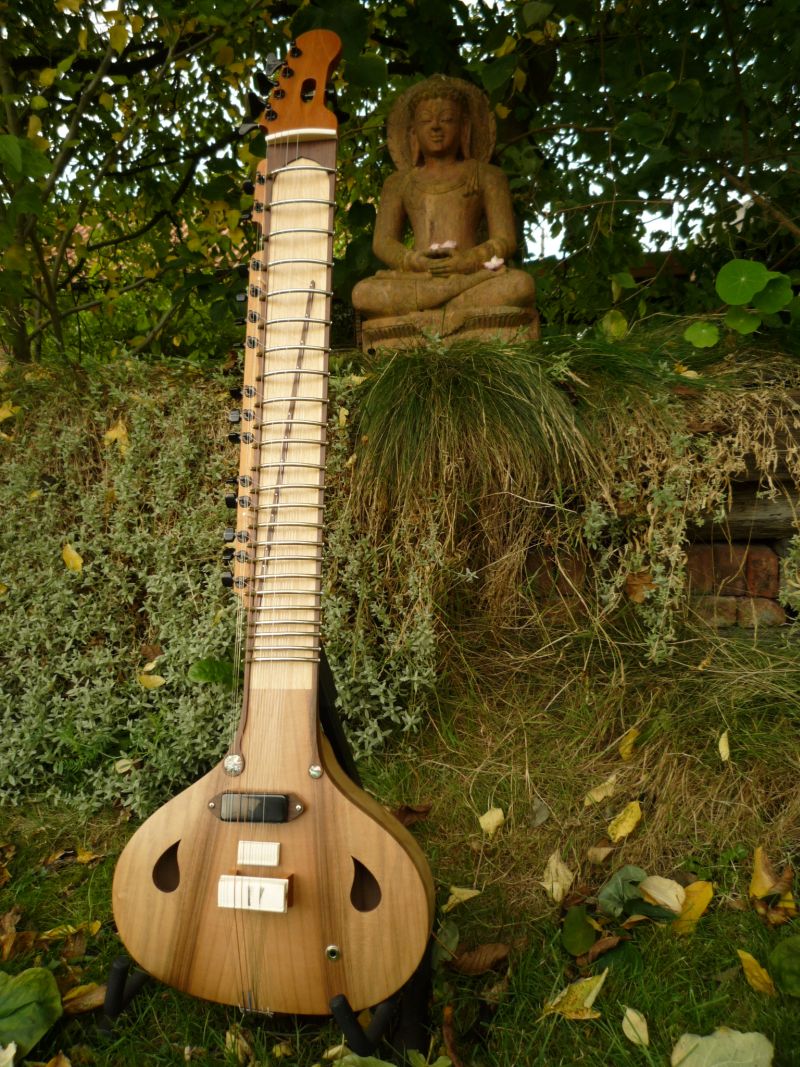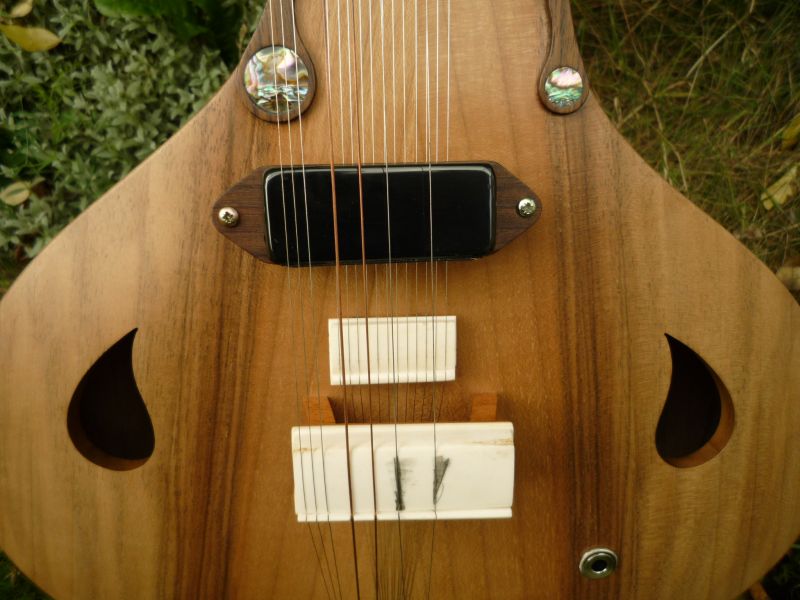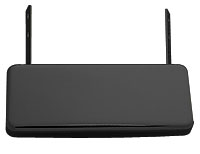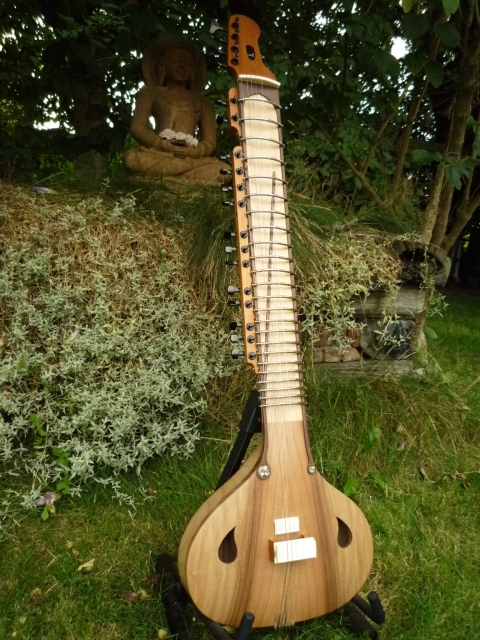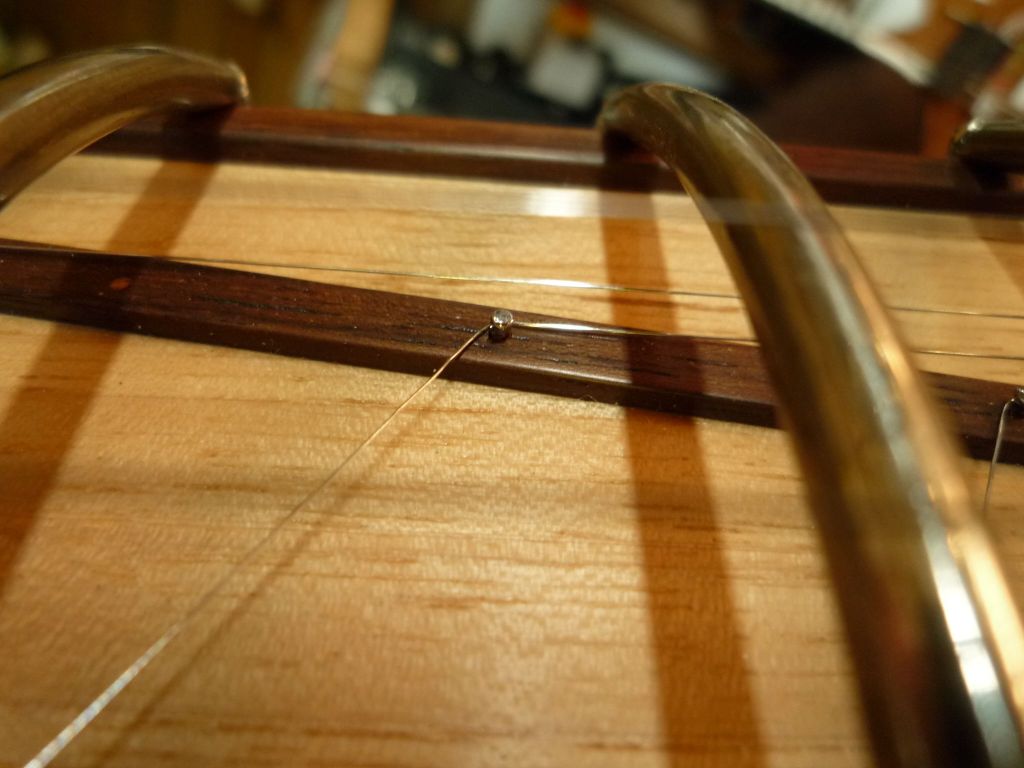Many sitars suffer from an improper intonation. Mostly affected are jora and laraj kharaj strings. If you are lucky you should be able to play comfortable on the first couple of frets only. After this, immediately pulling meend to correct the tone becomes a must. It is almost a part of the advanced sitar learning process…!!?
On my electric sitars only steel strings are used. Bronze flatwounded strings for laraj & kharaj and plain steel strings for jora. And this thick steel jora again causes some weird troubles. The intonation is far from correct and has this strange behaviour that the tone is too high rather than too low. This means that pulling meend to correct the difference is extra complex. One can only play a higher note on the particular parda…!!

The solution is to shorten the jora string. This is done by adding an intonation block to the tar daan under the jora. This block needs to be made at a particular lenght. My good friend and fine sitarplayer Bert Cornelis helped me to tune the sitars very accurately. Then we temporarily fixed a small piece of bone under the string to immitate the intonation block and as such we were able to measure its desired lenght. SAS-01 needs 10mm of intonation block lenght, SAS-02 only 6mm and SBS-02 12mm.
Day 68 & 69: The intonation block on the SBS-02 and SAS-02 is made out of a piece of extra hard and strong indian rosewood. The block is inserted into the tar daan and is armed with a short pin into the head to make sure it will not become loose when playing meend on the jora.

On the SAS-01 a small piece of stagg horn is used. It is also armed with a steel pin into the head’s wood. Now these sitars are very comfortable playing on the jora without hardly any correction up to reaching the middle SA parda.

